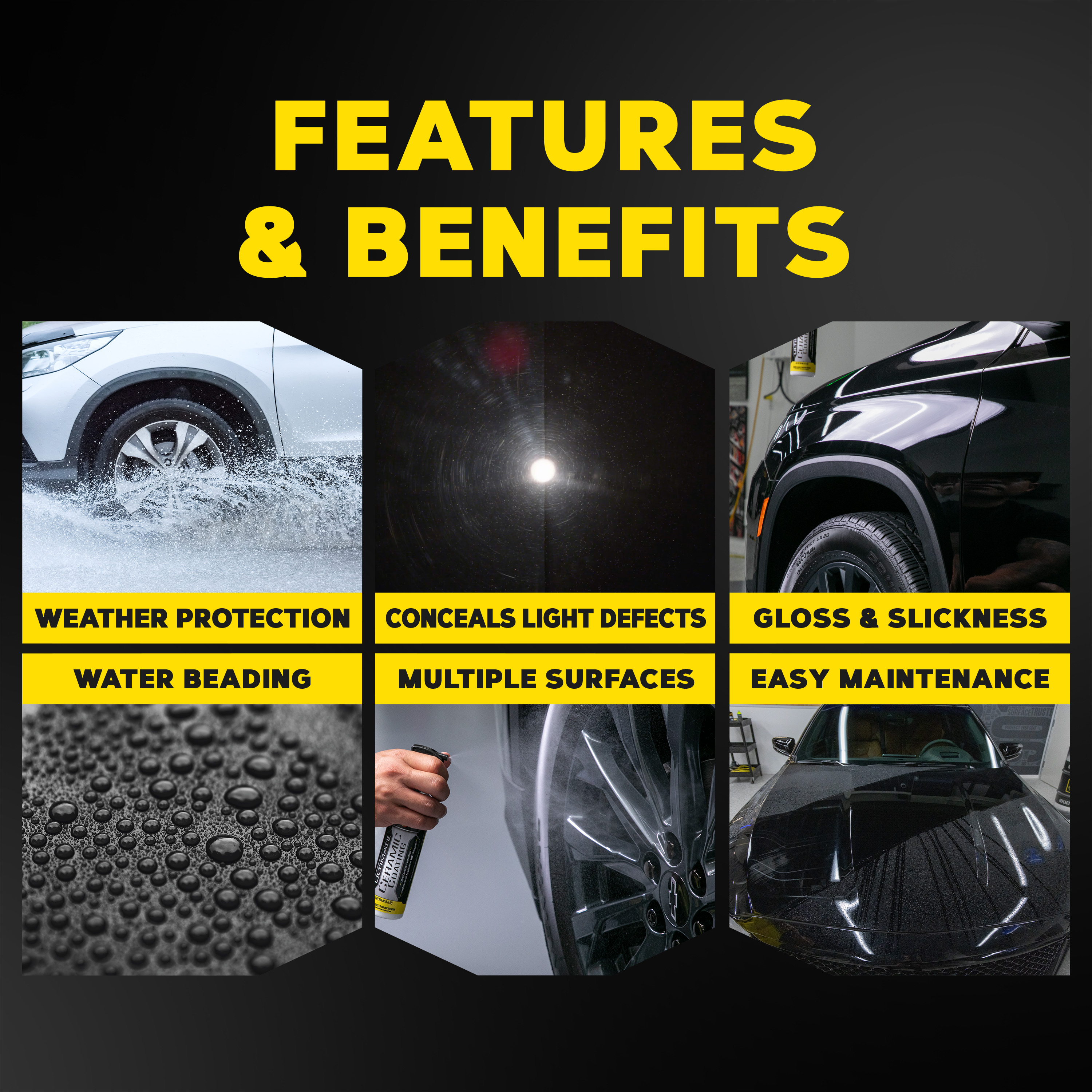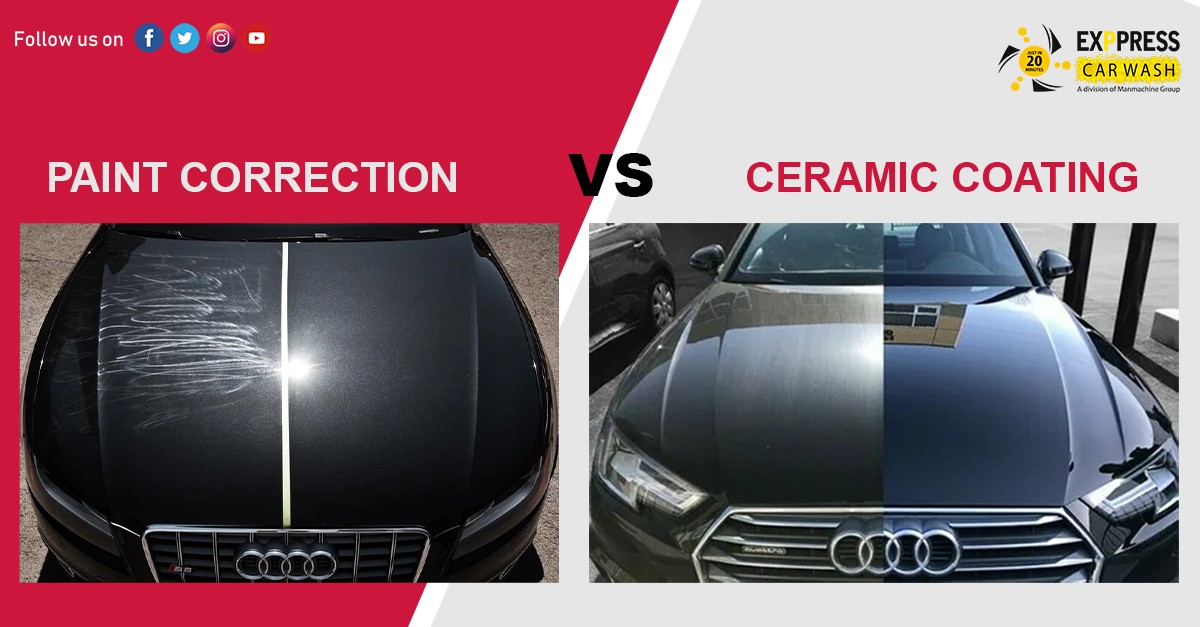The Role of Ceramic Covering in Safeguarding Your Car's Paint From Environmental Damages
Ceramic finishing has actually become an innovative service for car proprietors seeking to preserve the stability of their vehicle's exterior. By establishing a robust chemical bond with the paint, this sophisticated innovation provides a formidable obstacle versus various ecological threats, such as UV rays, acid rain, and pollutants. Nonetheless, understanding the detailed advantages and the details of the application process is important for optimizing its efficiency. As we explore the subtleties of ceramic finishing, it comes to be apparent that the choice to apply this safety step could dramatically influence your lorry's longevity and visual.
What Is Ceramic Coating?
Ceramic coating is a sophisticated fluid polymer related to the exterior surfaces of a vehicle, developed to provide a resilient layer of security for the paint. This cutting-edge solution forms a chemical bond with the vehicle's factory paint, creating a resilient and hydrophobic shield. The finishing is composed of nanoparticles that load in the microscopic imperfections in the paint, leading to a smooth surface area that boosts gloss and beam.
Normally, ceramic coverings are available in numerous solutions, allowing for different levels of protection and longevity. While some items can last for a number of months, others use defense for numerous years, relying on the thickness of the application and ecological elements. The application process requires thorough prep work, including washing, sanitizing, and brightening the lorry's surface area to make sure optimal adhesion of the coating.

Advantages of Ceramic Finishing
One of the key advantages of using a ceramic layer is the exceptional defense it provides to automotive paint. This innovative covering creates a long lasting layer that shields the automobile's surface from a selection of environmental risks, including UV rays, acid rainfall, bird droppings, and tree sap. By providing this durable defense, ceramic finishes considerably lower the danger of fading and etching, maintaining the auto's aesthetic allure gradually.
Along with protection, ceramic coatings are renowned for their hydrophobic properties, which push back water and dust, making it simpler to keep a clean automobile. This self-cleaning impact decreases the regularity of washing, saving both time and sources. Ceramic coatings improve the deepness of the paint's gloss, resulting in a vivid and polished look that elevates the general appearance of the car.
An additional significant advantage is the long life of ceramic coatings. Unlike standard waxes or sealants that call for frequent reapplication, ceramic finishings can last numerous years, providing a cost-effective option for car owners seeking long-term protection. In general, investing in ceramic covering causes boosted resilience, minimized upkeep, and continual visual appeal for automobile paint.
Just How Ceramic Covering Works
A ceramic finishing runs via a chemical bonding procedure that develops a safety layer on the automobile's paint surface check here area. This ingenious option makes use of innovative nanotechnology, where microscopic particles of silica are suspended in a fluid form - ceramic coating. Upon application, these particles bond with the manufacturing facility paint, creating a long lasting and hydrophobic layer that boosts the automobile's surface
The primary component of ceramic finishings, silicon dioxide (SiO2), adds to the finish's stamina and resilience. When healed, the finish transforms into a tough, glass-like surface that guards the paint from environmental contaminants such as dirt, UV rays, bird droppings, and tree sap. This molecular bond causes a surface area that is not only immune to scratches yet likewise easier to clean, as dust and gunk are less likely to stick.
Furthermore, the hydrophobic properties of ceramic layers trigger water to grain and slide off, minimizing the chances of water areas and natural resource. This protective barrier effectively lengthens the life of the paint and preserves the automobile's aesthetic charm, offering cars and truck owners a resilient solution for paint security.
Application Refine of Ceramic Finish
When thinking about the application of ceramic finish, preparation is essential to accomplishing ideal results. Any imperfections or scratches should be addressed at this phase, as the coating will certainly bond with the surface area below.

Ceramic coating is after that applied in tiny areas, generally making use of an applicator pad. The automobile ought to be left to heal in a controlled environment to permit the finishing to totally bond with the paint.
Long-Term Upkeep and Care
Accomplishing a successful ceramic layer application establishes the foundation for lasting protection, yet proper upkeep is important to maintaining its benefits. Normal washing is essential; utilizing a pH-neutral vehicle hair shampoo will aid preserve the covering's honesty without triggering damage. Stay clear of automated automobile cleans that use abrasive materials, as they can jeopardize the coating's surface.

In addition, applying a ceramic finishing upkeep spray can enhance the existing layer, offering an additional increase in defense and shine. It's recommended to do this every three to six months, depending on environmental direct exposure.
Last but not least, look at this site car parking in shaded areas or utilizing cars and truck covers can prevent prolonged exposure to hazardous UV rays and environmental pollutants, additionally expanding the life of your ceramic layer. By sticking to these upkeep techniques, you can guarantee your vehicle's finish remains protected and visually appealing for years to come.
Conclusion
In recap, ceramic coating serves as a vital safety action for auto paint, properly securing automobiles from a variety of ecological threats. Its capability to produce a robust hydrophobic barrier not just boosts aesthetic allure however additionally substantially lowers the frequency and intensity of maintenance required. The lasting nature of this innovative polymer emphasizes its value in maintaining automobile integrity and appearance, inevitably adding to a more durable and aesthetically enticing vehicle coating.
Ceramic useful content covering is an innovative liquid polymer used to the outside surfaces of a vehicle, made to give a long lasting layer of protection for the paint. Ceramic layers improve the depth of the paint's gloss, resulting in a sleek and dynamic appearance that raises the overall appearance of the car.
A ceramic coating runs through a chemical bonding process that develops a protective layer on the lorry's paint surface.The major component of ceramic layers, silicon dioxide (SiO2), contributes to the layer's stamina and strength.In summary, ceramic layer serves as a crucial protective step for auto paint, efficiently securing vehicles from a variety of ecological risks.